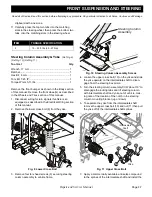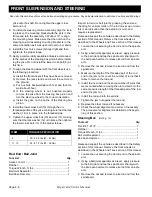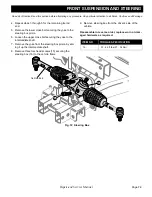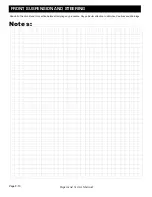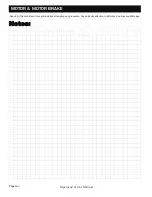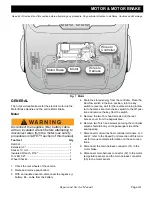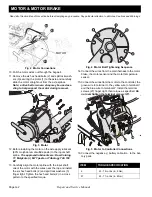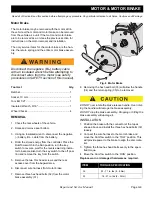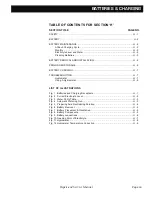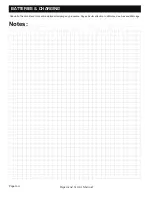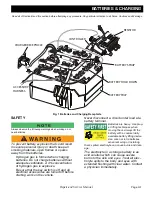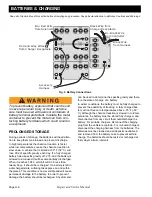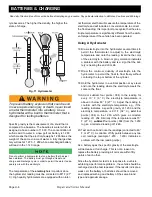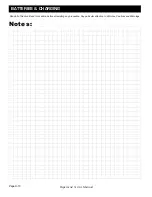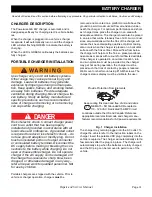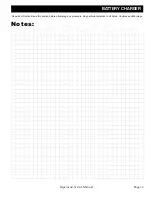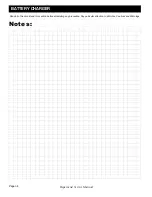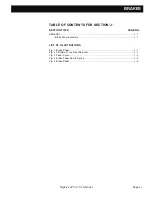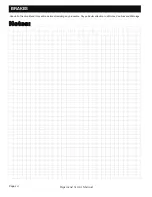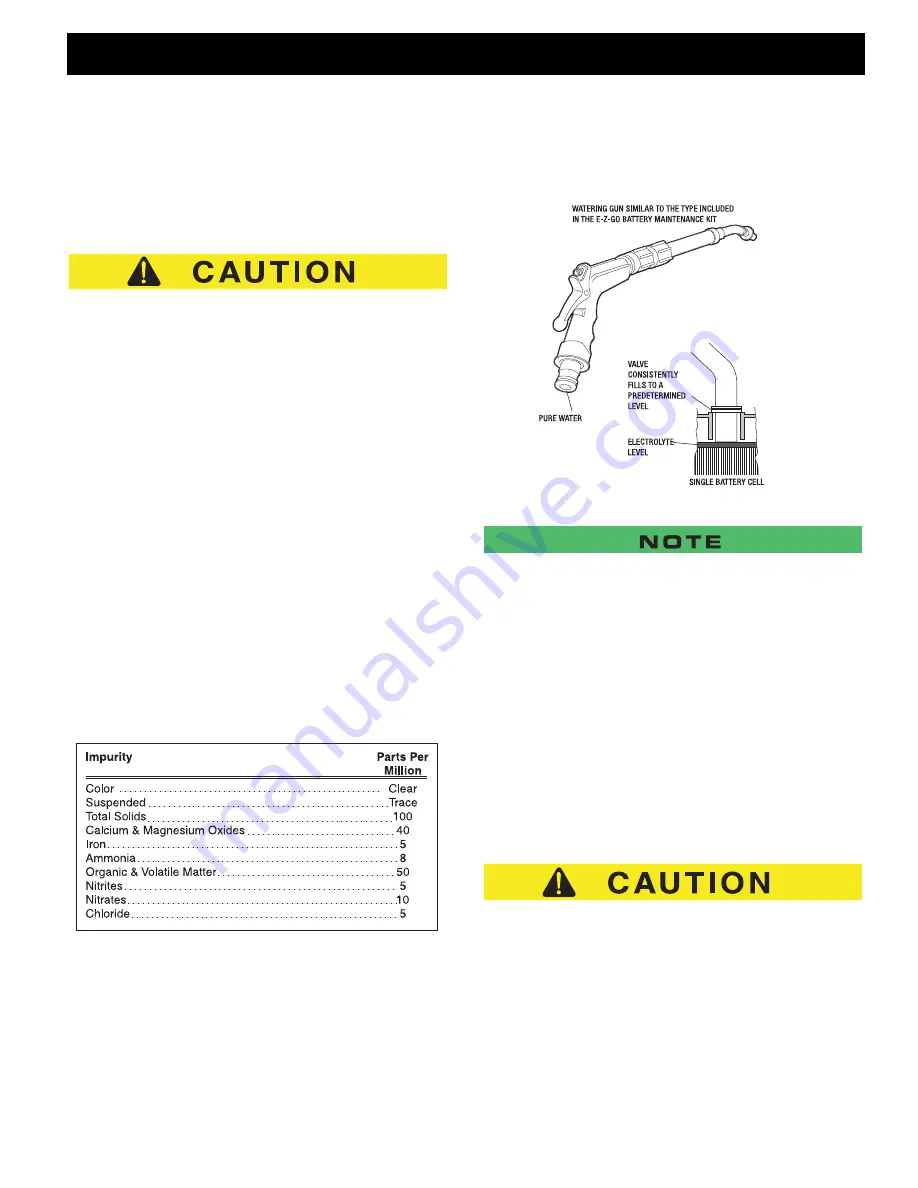
BATTERIES & CHARGING
Page H-3
Repair and Service Manual
Read all of Section B and this section before attempting any procedure. Pay particular attention to all Notes, Cautions and Warnings.
B
B
The electrolyte level is important since any portion of the
plates exposed to air will be ruined beyond repair. Of
equal importance is too much water which will result in
electrolyte being forced out of the battery due to gassing
and the decrease in volume of the electrolyte that results
from the charging cycle.
Do not overfill batteries. The charging cycle will expel
electrolyte and result in component damage
A battery being charged will ’gas’ with the majority of the
gassing taking place at the end of the charging cycle.
This gas is hydrogen which is lighter than air. Water and
sulfuric acid droplets will be carried out of the battery
vents by the hydrogen gas, however, this loss is mini-
mal. If the battery electrolyte level is too high, the elec-
trolyte will block the vent tube and the gas will force it
out of the vent tube and battery cap. The water will
evaporate but the sulfuric acid will remain where it can
damage vehicle components and the storage facility
floor. Sulfuric acid loss will weaken the concentration of
acid within the electrolyte and reduce the life of the bat-
tery.
Over the life of the battery, a considerable amount of
water is consumed. It is important that the water used be
pure and free of contaminants that could reduce the life
of the battery by reducing the chemical reaction. The
water must be distilled or purified by an efficient filtration
system. Water that is not distilled should be analyzed
and if required, filtration installed to permit the water to
meet the requirements of the water purity table.
Fig. 3 Water Purity Table
Even if the water is colorless, odorless, tasteless and fit
for drinking, the water should be analyzed to see that it
does not exceed the impurity levels specified in the
table.
Automatic watering devices such as the one included in
the Battery Maintenance Kit (P?N 25587-G01) can be
used with an approved water source. These watering
devices are fast and accurate to use and maintain the
correct electrolyte level within the battery cells.
Fig. 4 Automatic Watering Gun
The watering device should only be used if the electrolyte level
is less than 1/2” (13 mm) above top of plates.
Cleaning Batteries
When cleaning the outside of the batteries and termi-
nals, do not use a water hose without first spraying with
a solution of baking soda (sodium bicarbonate) and
water to neutralize any acid deposits. Use of a water
hose without first neutralizing any acid, will move the
acid from the top of the batteries to another area of the
vehicle or storage facility where it will attack the metal
structure or the concrete/asphalt floor. After hosing
down the batteries, a residue will be left on the batteries
which is conductive and will contribute to the discharge
of the batteries.
To prevent battery damage, be sure that all battery
caps are tightly installed.
The correct cleaning technique is to spray the top and
sides of the batteries with a solution of baking soda and
water. This solution is best applied with a garden type
sprayer equipped with a non metallic spray wand. The
solution should consist of 1/4 cup (60 ml) of baking soda
mixed with 1 1/2 gallons (6 liters) of clear water. In addi-
tion to the batteries special attention should be paid to

